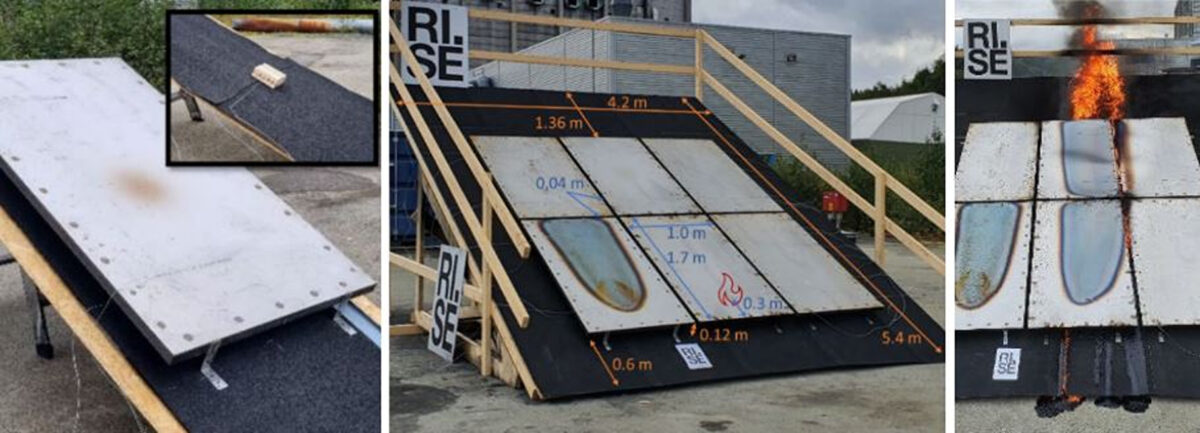
A Slovenia-Norwegian research group has investigated how fire could propagate in PV systems deployed on flat roofs and has found that the gap distance between the panels and the roofs, as well as the size of the ignition source, are key factors.
“Our work builds on previous knowledge from experiments by Underwriters Laboratories (UL) more than ten years ago,” the research's lead author, Reidar Stølen, told pv magazine. “The main difference from their work is that we have placed the ignition source below the PV modules to represent a fire that is caused by an electric fault in the PV installation. The UL experiments studied larger external fires spreading to the PV on sloped roofs.”
The research group demonstrated that for a fire to start and propagate in the cavity below a PV installation, it takes a certain amount of energy. “This means that if the energy released by an electric fault and following ignition of nearby materials, the fire will not propagate,” Stølen went on to say. “The amount of energy needed is depending on the geometry, like the cavity distance, but also on the materials in the cavity.”
The researchers varied the gap distance but used the same slope and materials in all tests across the different scales. In the experimental setting, they used PV modules made of steel, with no cabling or other materials being placed in the cavity, and a bituminous roofing membrane over a wood chipboard substrate at a 30 degree inclination. “Other constructions will surely need different minimum initiating energy to start a propagating fire,” Stølen specified.
With the available fuel load, the duration of the fire was limited to approximately 20 minutes in each part of the roof. The roof construction with a 22 mm chipboard had a sufficient fire resistance to prevent fire spread into the attic, according to the research team. “This shows that it does not nessecarily take a very robust construction to keep the fire outside of the building,” Stølen said. “However, with more fuel in the construction, the duration of the fire and the fire resistance would need to be longer.”
The scientists also observed another mechanism of fire spread throgh melted and burning bitumen. “Compared to previous research on flat roofs, we saw the same type of effects by the cavity distance,” Stølen added. “The main difference would be that with the sloped roof we experienced much faster flame spread as the plume was driven by the bouyancy up the roof slope. In the flat roof experiments, the fire was spreading in all directions and more influenced by wind.”
Their findings are available in the study “Experimental study of fire propagation on sloped roof with building applied photovoltaics,” published in the Journal of Physics. The research group included academics from Norway's RISE Fire Research AS and the Slovenian National Building and Civil Engineering Institute (ZAG).
The latter recently carried out a series of tests to assess the fire safety parameters of vertical rooftop PV systems and found these installations offer improved parameters compared to conventional rooftop arrays. The former conducted a series of experiments indicating that the distance between solar modules and rooftop surfaces could be a crucial factor in PV system fires.